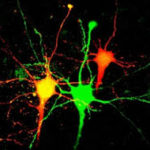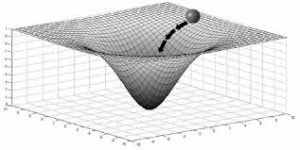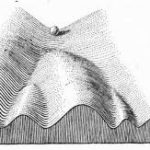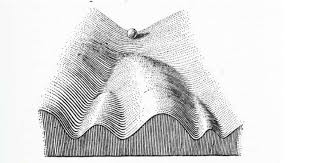Now that we are stepping firmly away from politics, I thought I’d end the season with a couple of excerpts from an article I recently published in Aeon. Please go to the publication website for the full essay and links. Otherwise, I’ll present an edited (shortened) version in two installments. Here’s the first:
……….
The view that addiction arises through learning appears to be gathering momentum. In fact the famous “disease model” of addiction remains fully dominant only in the U.S. (It is less prevalent in the UK, Europe, and Australia, though it still has a strong following in the treatment world.) Yet the question remains: if addiction is learned, how does it become so much more crystallised, entrenched, in fact stuck, than other learned behaviours? Given that what we learn we can often unlearn, why is addiction so hard to get rid of?
Johnny was a British plant manager, and his childhood included several years in a boarding school where sexual abuse by clergymen lurked insidiously behind the rustlings of bedtime. Johnny grew up anxious but competent; he married, then divorced, and enjoyed regular visits with his grown children – a relatively normal and predictable life. Until it all unravelled. His friends and business associates found it hard to watch, and impossible to interfere, as Johnny approached end-stage alcoholism. He drank himself so close to death that his first reaction to waking up was surprise. By the final six months, Johnny’s days acquired a strange rhythm. They began with a walk to the fridge, rum and ice already crackling by the time he got to the toilet. They would end 4 to 5 hours later when he crawled to bed on his hands and knees, unable to stand. After a few hours’ sleep, there’d begin another ‘day’ of drinking, which lasted only until his next collapse. Johnny told me he would have committed suicide, but it was happening by itself.
Why was it so hard to overcome this behaviour pattern when it got close to destroying him? Why the horrendous sameness, the insidious stability? Why couldn’t he stop? These are the questions that a learning model of addiction has to answer.
I would call addiction a learned habit. In fact, the word ‘habit’ has been used to describe addiction for ages. Yet habits can be hard to specify. They don’t just show up in behaviour. Racism is a habit that’s invisible until it shows itself in a particular context. I would term addiction a ‘habit of mind’ – a habit of thinking and feeling that sometimes gets expressed in behaviour. But then how can we examine habits that aren’t clearly observable? Let’s look to the brain to find out.
From a neural perspective, habits are patterns of synaptic activation that repeat, when connections among neurons (ie, synapses) fall into the same pattern over different occasions repeatedly. When a  person thinks familiar thoughts or performs familiar actions, a vast number of synapses become activated in predictable – ie, habitual – configurations. Patterns of neural firing in one region become synchronised with patterns of firing in other regions, and that helps the participating synapses form these habitual connections.
person thinks familiar thoughts or performs familiar actions, a vast number of synapses become activated in predictable – ie, habitual – configurations. Patterns of neural firing in one region become synchronised with patterns of firing in other regions, and that helps the participating synapses form these habitual connections.
With each repetition, activated synapses become reinforced or strengthened, and alternative (less used) synapses become weakened or pruned. Meanwhile, active synapses give rise to the activation of other  synapses with which they’re connected, and because connections between brain cells are almost always reciprocal (two-way), the reinforcing activation is returned. Thus, repeated patterns of neural activation are self-perpetuating and self-reinforcing: they form circuits or pathways with an increasing probability of ‘lighting up’ whenever certain cues or stimuli (or thoughts or memories) are encountered. According to Hebb’s rule: ‘Cells that fire together, wire together.’
synapses with which they’re connected, and because connections between brain cells are almost always reciprocal (two-way), the reinforcing activation is returned. Thus, repeated patterns of neural activation are self-perpetuating and self-reinforcing: they form circuits or pathways with an increasing probability of ‘lighting up’ whenever certain cues or stimuli (or thoughts or memories) are encountered. According to Hebb’s rule: ‘Cells that fire together, wire together.’
In this way, the brain exemplifies the way all living systems evolve and stabilise. All living systems, from organisms to societies, ecosystems to brains, are complex systems with emergent properties. That means that their structure, their shape, emerges from the interaction of many components that change each other over time. In other words, these systems self-organise due to recurrent interactions (feedback loops) among their elements.
It so happens that there is a robust scientific language for understanding habit-formation in self-organising systems, centred on the term ‘attractor’. An attractor is simply a stable state, which can emerge for a while in a complex (e.g., living) system. So: seeds grow into trees and then stabilise to an  attractor: the tree acquires a shape. Birds fly in sync with each other and form a V-shaped (or other-shaped) flock. Ecosystems go through periods of massive change (eg, speciation and species death) and then stabilise. Cities stabilise. Cultures stabilise. Even family dynamics stabilise. Family arguments inevitably fall back into the same infuriating script.
attractor: the tree acquires a shape. Birds fly in sync with each other and form a V-shaped (or other-shaped) flock. Ecosystems go through periods of massive change (eg, speciation and species death) and then stabilise. Cities stabilise. Cultures stabilise. Even family dynamics stabilise. Family arguments inevitably fall back into the same infuriating script.
Complex systems are composed of elements such as individuals in a society or ecosystem, or cells in an organ or organism. These elements continue to interact – they cause changes in each other, which cause further changes in each other, and so forth – until they arrive at stable states, at least for a while.
So what’s the point of a word like ‘attractor?’ Complex systems such as us and our brains reach stability in a very different way than cars or billiard balls (nonliving systems). They have not lost their energy; they continue to grow and develop, to live. But for some period of time, the feedback loops that comprise them provide steadiness or balance, like your body temperature after you’ve gotten used to a blast of wintry air. At that point, we can say that the system has reached its attractor. Its components now interact in a way we might call a temporary equilibrium.
The attractor idea is tremendously useful for describing the development of human habits, because human habits settle into place; they are not programmed by our genes or determined by the environment. But how exactly do attractors form in growing systems, why do they form, and why do they hold the  system in place? Attractors are often portrayed as valleys or wells on a flat surface, that surface representing many possible states for the system to occupy. The system, the person, can then be seen as a marble rolling around on this surface of possibilities until it rolls into an attractor well. And then it’s hard for it to roll back out. Physicists will say that the system requires extra energy to push itself out of its attractor. The analogy in human development might be the effort people require to shift out of a particular pattern of thinking or acting.
system in place? Attractors are often portrayed as valleys or wells on a flat surface, that surface representing many possible states for the system to occupy. The system, the person, can then be seen as a marble rolling around on this surface of possibilities until it rolls into an attractor well. And then it’s hard for it to roll back out. Physicists will say that the system requires extra energy to push itself out of its attractor. The analogy in human development might be the effort people require to shift out of a particular pattern of thinking or acting.
 In human development, normative achievements can be seen as attractors. These might include learning to be a competent language user, or falling in love and having kids. But individual personality development can also be described in terms of attractors – recognisable features that characterise the individual in a particular way. And these features can be seen to branch out with development and form ruts — ruts that can remain in place for a long time.
In human development, normative achievements can be seen as attractors. These might include learning to be a competent language user, or falling in love and having kids. But individual personality development can also be described in terms of attractors – recognisable features that characterise the individual in a particular way. And these features can be seen to branch out with development and form ruts — ruts that can remain in place for a long time.
Addiction is just such an attractor. The staying power of addiction doesn’t derive from a good fit with the social world or the playing out of some innate human tendency. Addiction involves an intense relationship between a person and a substance or behaviour. That relationship is itself a feedback loop that has reached the stage of self-reinforcement, and it is interconnected with other feedback loops that facilitate the addictive pattern. These feedback loops have driven the system – the person, the person’s brain – into an attractor that deepens over time.
…THE REST TO COME IN A COUPLE OF DAYS…

Leave a Reply to Tom B Cancel reply